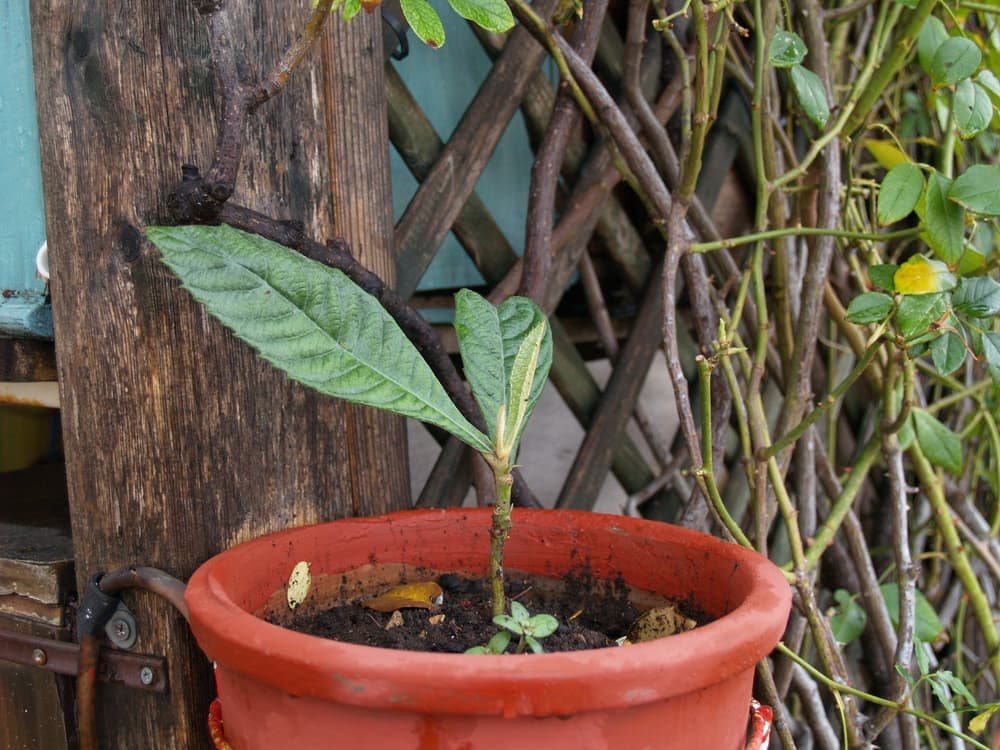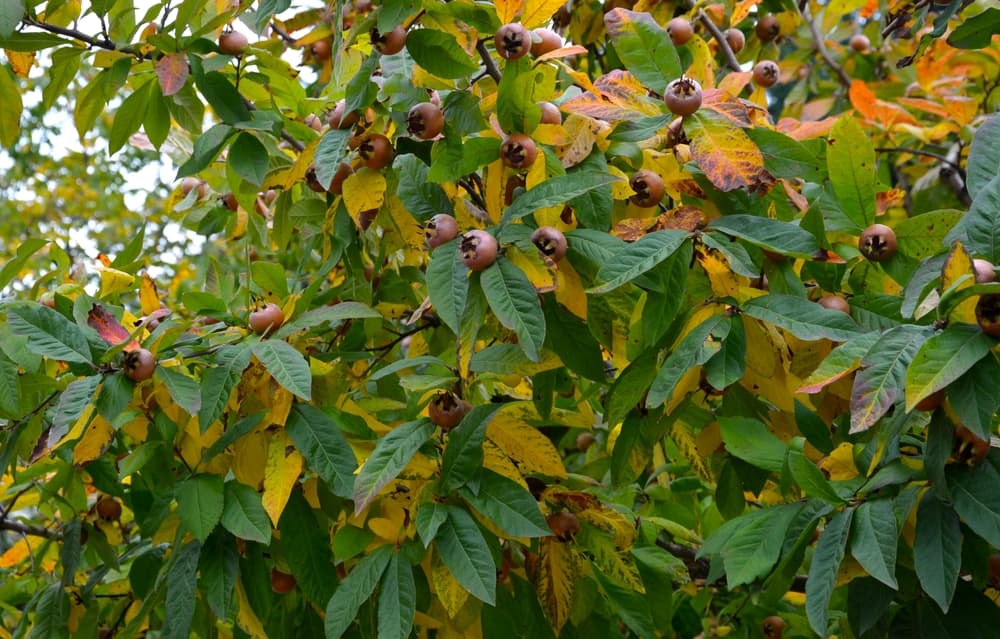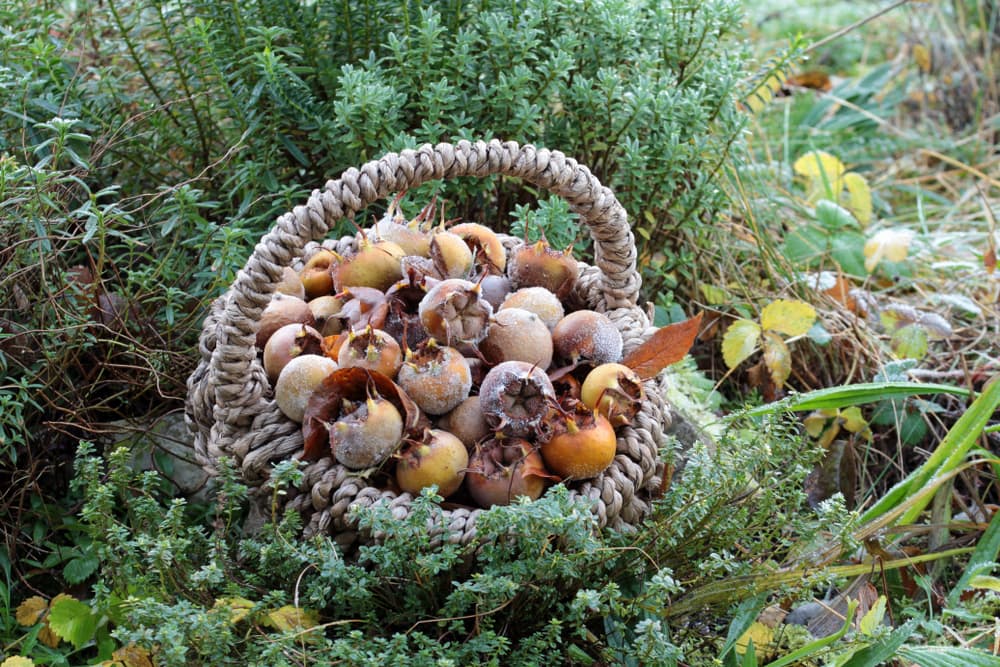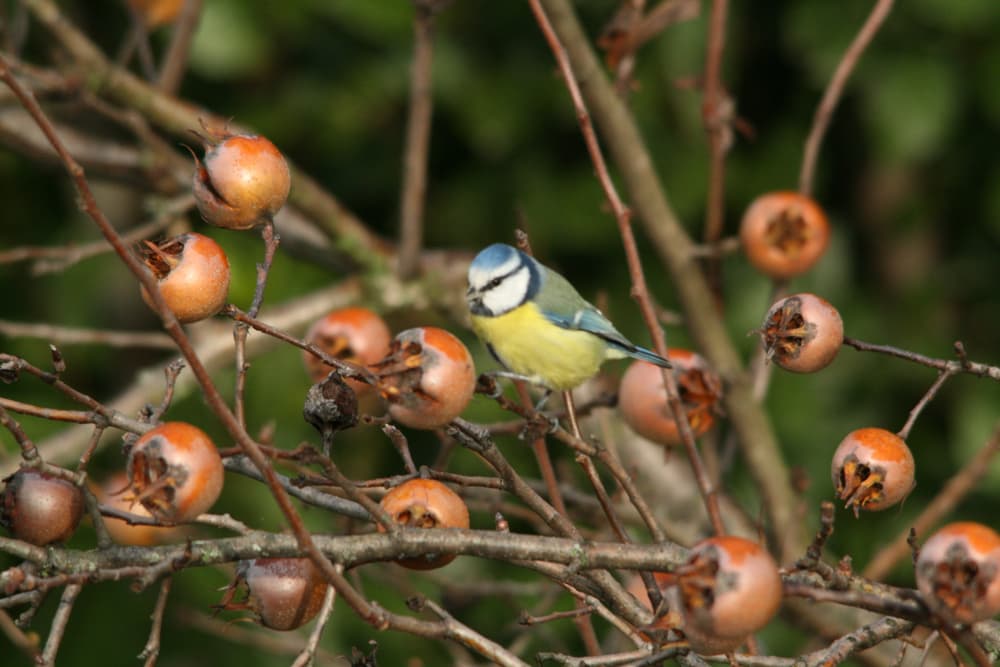Growing Medlar: An Unusual Choice As A Fruit Tree, But It Can Be A Rewarding Plant

FRUIT > MEDLAR
Chris is a gardening writer and nature enthusiast. He graduated from Oxford Brookes University in 2022 with an MA in Psychology. Chris works with the Leeds Green Action Society, helping their food cooperative by growing various fruit and vegetables on their two allotments in Hyde Park, Leeds.
Reviewed By ROY NICOL

Roy is a Professional Gardener and Horticultural Consultant, specialising in large garden year-round maintenance and garden development. He is an RHS Master of Horticulture and uses his research in the application of no-dig methods in ornamental garden settings. Roy has been a Professional Gardener for more than six years and is a member of the Chartered Institute of Horticulture, Professional Gardener's Guild and Association of Professional Landscapers (Professional Gardener).
MEDLAR GUIDES
It must be said that this plant is fairly unusual.
It’s a tree that can also be grown as a shrub, and it bears an edible fruit, but here’s the thing: the vast majority of people in the UK won’t have tried – or even heard – of it!
However, Mespilus germanica, more commonly known as medlar, is a rewarding and interesting plant to grow.
We’ll hold off from saying the fruit is delicious because it’s something of an acquired taste, but it is a new and potentially intriguing flavour.
Overview
| Botanical Name | Mespilus germanica |
| Common Name(s) | Common Medlar, Dutch Medlar |
| Plant Type | Fruit Tree / Shrub |
| Native Area | Europe, Middle East |
| Hardiness Rating | H6 |
| Foliage | Deciduous, long leaves |
| Flowers | White blossom in spring |
| When To Plant | January, February, March, November, December |
| Harvesting Months | November, December |
| When To Prune | February, March |
Sunlight
Preferred
Full Sun
Exposure
Exposed or Sheltered
Size
Height
4 – 8M
Spread
4 – 8M
Bloom Time
Spring
Soil
Preferred
Most soil types
Moisture
Moist but well-drained
pH
Any
Medlar, or Mespilus germanica, is an ancient fruit that bears some resemblance to pomegranate, and tastes to some a little like quince.
The fruits are brown or yellow, and usually measure between 2.5-5cm.
Each fruit has a cluster of five ‘petals’ around its top, lending them a distinct aesthetic when compared to other common garden fruits.
As we mentioned, medlar can grow as a tree or as a shrub.
Trees of the original species Mespilus germanica will grow up to eight metres; grafted trees and shrubs will clock in a fair bit smaller.

The tree is known for growing in a lopsided way, to the point that it can be pulled down by its own weight.
Although it may not be relevant for the first few years, bear in mind that you may need to stake your tree to support it in its later years or carry out formative pruning as the tree grows to help prevent too much growth on one side.
Why Grow Medlar?
The fruits are edible, as we’ve said, but they have a fairly unusual taste.
If you’ve ever tried quince it’s in that ballpark, but not quite the same.
Other people say it evokes apple sauce flavours, but opinions on the exact nature of the taste (and its appeal!) vary wildly.

The main reason we recommend medlar is novelty – it’s something you won’t find in supermarkets or even grocery stalls at markets.
Most people won’t have tried it, making it a good conversation starter and point of interest in your garden.
Given the differing opinions on the flavour, you may not be convinced to grow medlar based on the eating opportunities alone.
And if that’s the case, you’re in luck because this is also an attractive ornamental plant that will provide something a little different for your outdoor space.
How To Grow Medlar
Sowing
It’s possible and not too difficult to grow this plant from seed – sow in early spring and start in small pots.
Ensure they have moist soil, and are kept in a dark, cool spot.
Seeds will take around five weeks to germinate and should be hardened off before being planted out.
“Bear in mind this will produce the original species tree Mespilus germanica which is likely to grow into a large tree up to 8m, so enough space needs to be allocated for it to grow,” adds Roy Nicol, a Master Horticulturist.
Planting Out
You can buy medlar as a shrub if you’re not interested in growing it from seed.
Plant this out any time between November and March, and use a stake to keep the fledgling tree supported for the first five years or so.

Medlar can be grown in containers as well as in the ground – go for a big pot to give the plant ample space to grow.
Again, plant out in November through March.
Where To Grow
Choose a spot with deep and fertile soil; drainage needs to be good; full sun is best for medlars but partial shade will work as well.
It’s important to choose a spot that won’t be exposed to strong winds, as the leaves and floral bloom of medlar are both easily damaged.
Medlar Care
Fertilising
Mulch the area at the base of the plant, and keep the soil fed well to ensure the plant is well nourished.
Add a handful of high potassium fertiliser each spring, such as granular Sulphate of Potash, one handful for each metre of soil surface.
Or, if growing on grass rather than just soil, use a handful and a half.
Watering
Medlar isn’t overly thirsty, except in dry spells.
Be extra vigilant in the first four years of the plant’s life, making sure to keep it well watered during particularly dry patches in this period.
Pruning
To keep your medlar in prime condition you’ll need to remove weak and dead branches.
Winter is the best time to prune, when the leaves have fallen.
Depending on whether you’re growing as a tree or shrub, your priorities when pruning will be different.
For a tree, your priority is establishing a balanced branch system to encourage efficient fruiting and to avoid problems later in the tree’s life.

The method for pruning young fruit trees is actually quite involved (medlars are pruned in the same way as apple and pear trees) and because it won’t be relevant to everyone reading this piece we’ll link you to a great resource instead.
If you’re growing a medlar tree and need advice on pruning it during the formative years, check out this great guide from the Royal Horticultural Society.1Apple and pears: pruning newly planted trees. (n.d.). Royal Horticultural Society. Retrieved March 21, 2023, from https://www.rhs.org.uk/fruit/apples/pruning-new-trees
Harvesting
Bear in mind that it will take a few growing seasons to bear fruit: between three and five years.
When your medlar is bearing fruit, October and November are the best times for harvest.
You can leave fruit on the tree to ripen for a little longer, just watch out for frost as this will push them past their best.
Pick your medlars when the fruit is rock hard, then let it ripen before eating.
There’s a special name for this process which you may not have heard before: bletting.

When bletting fruit, you’re letting it rot slightly before you eat it – this sounds a little grim but trust us – it’ll get you the best results!2Gorvett, Z. (2021, March 25). The forgotten medieval fruit with a vulgar name. BBC Future. Retrieved March 21, 2023, from https://www.bbc.com/future/article/20210325-the-strange-medieval-fruit-the-world-forgot
With medlar you eat the filling but not the seeds.
Common Problems
Medlar is prone to visitations from certain garden pests, but thankfully they’re not too difficult to keep in check.
Here’s what you need to keep a lookout for:
Winter Moth Caterpillars
These creatures enjoy eating and generally damaging the leaves of your medlar, which can disrupt its ability to photosynthesize.
Picking off the caterpillars should be enough to deter them, and keep a vigilant eye to make sure they don’t return.
“If some damage is experienced from these caterpillars during a growing season, a grease band can be placed around the trunk in October until the spring to prevent the wingless female moths from travelling up the tree and laying eggs in the canopy,” says Roy.
Birds
Flying visitors are also prone to be attracted by the promise of fresh fruit.
There are visual ways to deter birds: scarecrows and such. You can also use anti-bird gel, spikes, or ultrasonic repellers.
Recordings of bird distress calls work well, too.

You’ve got a few options and the most suitable will depend on your garden and your preferences.
While it may take a little getting used to – and be forewarned the flavour isn’t for everyone – the potential rewards of growing this plant far outweigh the downsides.
Even if you’re not a fan of the taste of medlar you’ve still got an attractive and distinctive plant growing in your garden.
Whatever your reasons, we hope you enjoy growing medlar, and that you found this guide useful.
References
- 1Apple and pears: pruning newly planted trees. (n.d.). Royal Horticultural Society. Retrieved March 21, 2023, from https://www.rhs.org.uk/fruit/apples/pruning-new-trees
- 2Gorvett, Z. (2021, March 25). The forgotten medieval fruit with a vulgar name. BBC Future. Retrieved March 21, 2023, from https://www.bbc.com/future/article/20210325-the-strange-medieval-fruit-the-world-forgot
